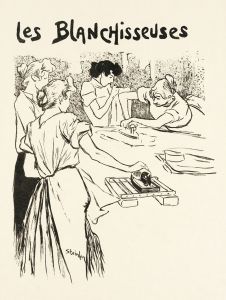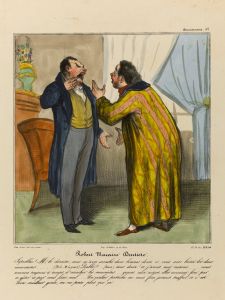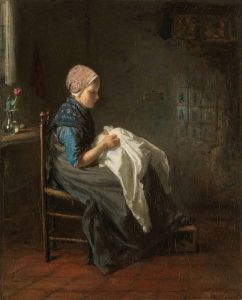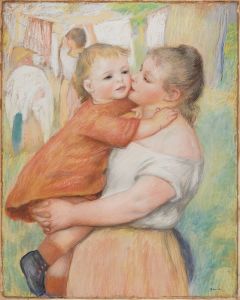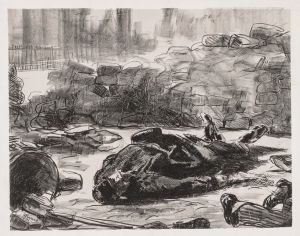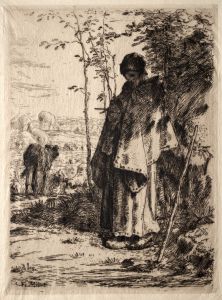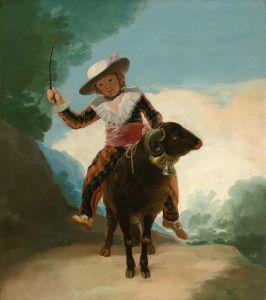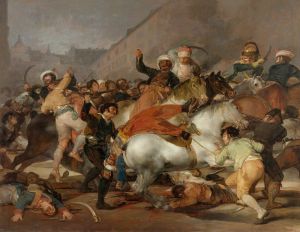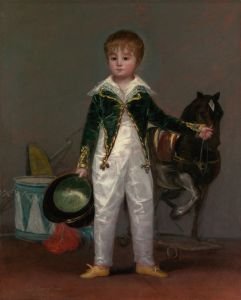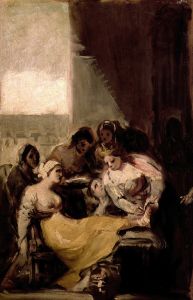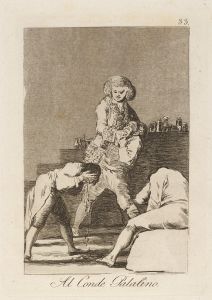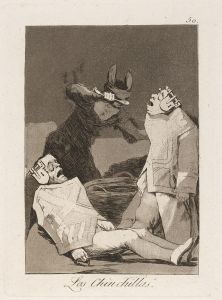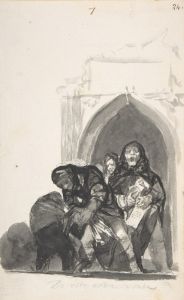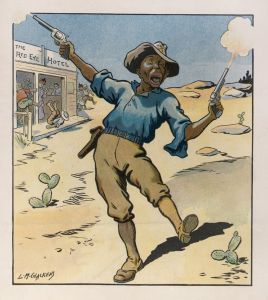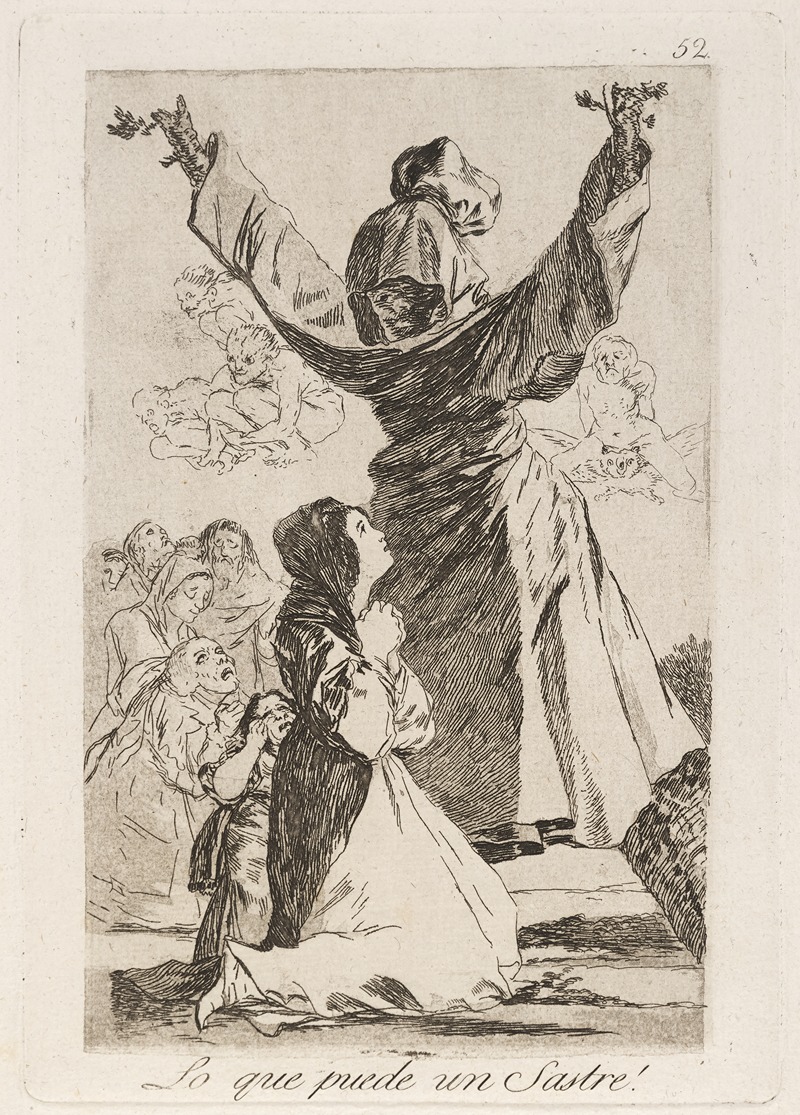
Lo que puede un Sastre!
A hand-painted replica of Francisco de Goya’s masterpiece Lo que puede un Sastre!, meticulously crafted by professional artists to capture the true essence of the original. Each piece is created with museum-quality canvas and rare mineral pigments, carefully painted by experienced artists with delicate brushstrokes and rich, layered colors to perfectly recreate the texture of the original artwork. Unlike machine-printed reproductions, this hand-painted version brings the painting to life, infused with the artist’s emotions and skill in every stroke. Whether for personal collection or home decoration, it instantly elevates the artistic atmosphere of any space.
"Lo que puede un sastre!" (What a tailor can do!) is a painting by the renowned Spanish artist Francisco de Goya. Created in 1799, this work is part of Goya's famous series of prints known as "Los Caprichos," which consists of 80 aquatint and etching prints. "Los Caprichos" is widely recognized for its satirical and critical commentary on the social, political, and religious issues of late 18th-century Spain.
The painting "Lo que puede un sastre!" specifically addresses the theme of deception and the superficiality of appearances. In this work, Goya illustrates a scene where a tailor is shown creating an elaborate costume for a donkey. The donkey, dressed in fine clothing, symbolizes the idea that outward appearances can be manipulated to create false impressions of status and worth. This theme is consistent with Goya's broader critique of the societal norms and the pretensions of the aristocracy and clergy of his time.
Goya's technique in "Lo que puede un sastre!" is notable for its use of aquatint, a printmaking method that allows for the creation of tonal effects. This technique enabled Goya to achieve a range of shades and textures, enhancing the visual impact of his satirical message. The composition of the painting is carefully constructed to draw the viewer's attention to the absurdity of the situation, with the donkey's dignified pose contrasting sharply with the ridiculousness of its attire.
Francisco de Goya (1746-1828) is considered one of the most important Spanish artists of the late 18th and early 19th centuries. His work spans a wide range of subjects, from portraits of the Spanish royal family to deeply personal and often disturbing depictions of war and human suffering. Goya's "Los Caprichos" series, including "Lo que puede un sastre!," is particularly significant for its innovative use of printmaking techniques and its bold social commentary.
The "Los Caprichos" series was initially published in 1799, but Goya withdrew it from public sale shortly after its release, likely due to pressure from the Inquisition and other authorities who found its content controversial. Despite this, the series has since become one of Goya's most celebrated works, admired for its artistic mastery and its fearless critique of contemporary society.
In summary, "Lo que puede un sastre!" by Francisco de Goya is a powerful example of the artist's ability to use satire and symbolism to comment on the superficiality and deception prevalent in society. Through his masterful use of aquatint and etching, Goya creates a visually striking and thought-provoking image that continues to resonate with audiences today.





